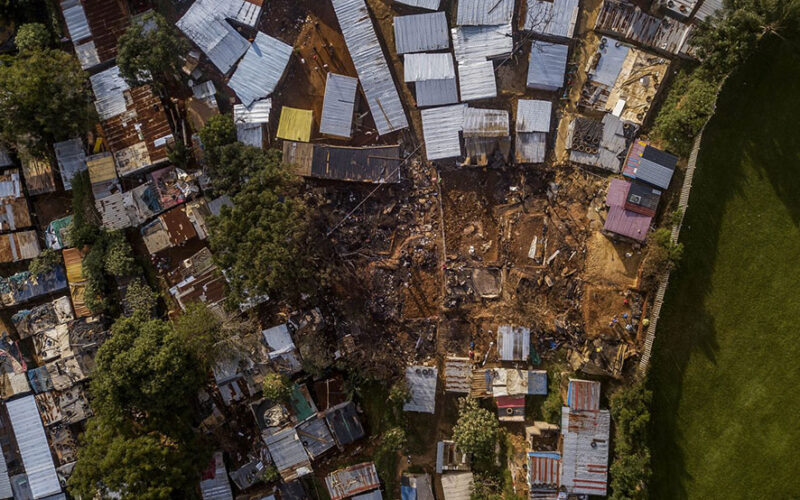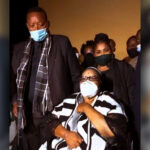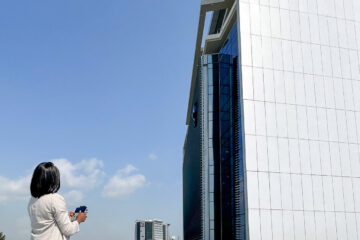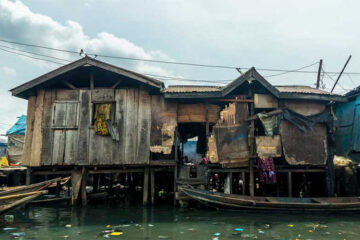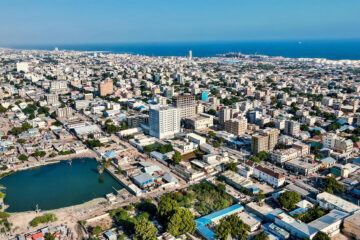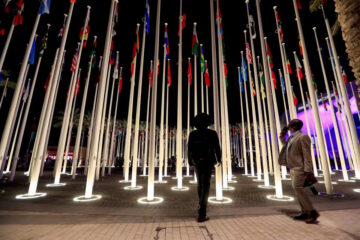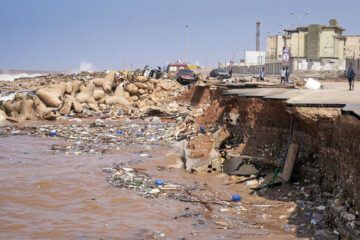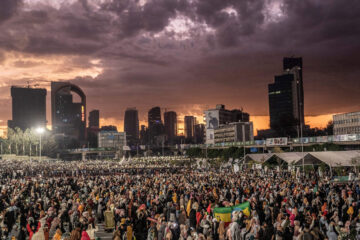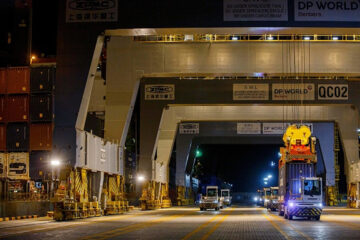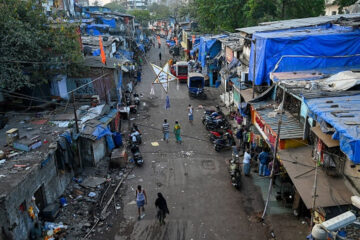GREG ARDÉ
NOMASOMSON Dlamini isn’t likely to go down in the annals of South African history, but the terror of her death will be permanently etched in the minds of a small group of the country’s most impoverished people.
Dlamini, 38, was a domestic worker in Durban.
She lived in the Marikana shack settlement in Cato Crest, one of hundreds of thousands of people who call the city’s 581 shack settlements home. To officials and politicians, Dlamini is a statistic. But her neighbours recall her ready smile. And the horror of her death.
Dlamini burnt to death at 3am on Sunday 18 April, when a fire ripped through her settlement on the outskirts of the central business district. The blaze consumed her 2x2m house in minutes and then spread with devastating fury, devouring 48 homes.

Neighbours tried to save Dlamini. They thronged the narrow alleyways in the cramped settlement within minutes of hearing her screams, but couldn’t get to her. Terrified residents fled as the flames seared and scorched their houses, razing the maze of jam-packed homes. The intense heat curled sheets of corrugated iron and the flames guzzled plastic, wood, furniture and clothes.
“It was terrible,” said neighbour Duduzile Hlephu, 38, who heard Dlamini’s wails. “We tried to help her but we couldn’t. The fire got so big so quickly. I heard her crying and crying. I will never forget it.”
Flames and fear
Thanduxolo Siqwebu, 44, was Dlamini’s immediate neighbour. His family of six shared a two-room house. He and his wife and three daughters were in the front room and their son, 16-year-old Cebo, had the back room adjacent to Dlamini’s home.
When the fire broke out, the house caved in and Cebo was trapped. His father worked frantically, ripping at hot sheets of metal to get to him. “I heard my son’s cries and I thought I must get to him.” The walls collapsed and Siqwebu yanked Cebo out of the flames. “I knew if I didn’t get to him he would die and I would hear his cries in my mind forever.”

Three days after the fire, Cebo was bandaged and stoic, but like his neighbours he was deeply traumatised. Hlephu said that two days after the fire she saw a neighbour shivering like he had a fever. “I asked him if he was sick and he said no, he was scared. We all live with this fear of fire. The fire can come anytime… You must be ready to run in the middle of the night.”
The local councillor had yet to visit the area four days after the fire, she said. Neighbours were trying to rebuild their homes and raise money to get Dlamini’s body back to her family and her two children in Lesotho.
Residents are either relying on the charity of neighbours whose houses the fire did not claim, or sleeping in the community hall built by the shack dwellers’ movement Abahlali baseMjondolo. They are in dire need of clothes, blankets and food.
Residents began working feverishly the day after the fire to clear and level the steep site, and rebuild their homes or erect temporary shelters.

Forgotten people
The settlement was established in 2012 and is named in commemoration of the massacre of striking miners at Marikana, near Rustenburg in North West province, in which the police shot and killed 34 miners. The specific section of Marikana that burnt was called Nqobile in honour of teenager Nqobile Nzuza, whom the police shot and killed during a protest against evictions in 2013.
“We compare our life to those people in Marikana,” said Siphokuhle Nkwenkwana 33, on behalf of the residents. “In 2012, we moved here because we were excluded from the development over there,” he said, pointing to a nearby low-cost housing development.
“We are forgotten people,” said Hlephu, who works as a cashier and spent R750 to build a retaining wall so she could begin rebuilding her house. “We need shelter. There are no soup kitchens or feeding schemes. We have to provide for ourselves. We are lucky some of our neighbours are kind. There seems like no hope, but there is a tiny bit and that is what makes us carry on.”

Nkwenkwana said in summer the shack dwellers live in fear of heavy rain washing their houses down the hill and in winter they are petrified of fires. Help from the municipality, or anyone for that matter, would be appreciated, the residents said. “We don’t know where the best place is to build, or what materials to use. We just try our best with what we have,” Hlepu added. “We have to live.”
Hlepu said residents are resourceful and able to build cheaply. A two-room dwelling of about 36m² can be constructed for R15 000, she said.
After the fire, adults from the Juqu family scrounged through the acrid ruins of their house in Marikana. Matriarch Zanele Juqu stared vacantly at what was once her home. The loss of prized possessions – a fridge, beds and linen – paled in comparison with the loss of her identity document, she said.

Shacks of indignity
Abahlali said the increase in fires is inevitable as people try to keep warm in winter. “Shack fires start in the night and in the early morning.
“In most cases, there is no response from emergency services and homes burn until there is nothing left.
“The community has been struggling to get the settlement electrified by the municipality. Promises have been made but have not been honoured.
“We are burning because of the conditions we live under. We are burning because basic services are not provided to us by politicians who see us as banks for votes. We continue to live in the shacks of indignity. We do not count in the eyes of this government. We are only important when it is time for elections.”
Abahlali has no recent data on shack fires and fatalities, but said there had been three fires in Durban in recent weeks and two fatalities, including Dlamini.
Abahlali president S’bu Zikode cited work done by researcher Matt Birkinshaw, who said in 2008 that there were 10 shack fires a day on average in South Africa.
Cape Town shack fires had already killed five people and displaced more than 500 this year by mid-January, according to news website IOL.
Struggle for accountability
Abahlali is at the forefront of efforts to hold the government to account for its poor housing delivery and its failure to undertake sufficient in-situ upgrades in settlements. It has consistently asked the eThekwini municipality to make public the lists of recipients of low-cost housing, but has been ignored.
At Marikana, hundreds of people share a single ablution facility. Electricity connections are informal, and refuse removal is done via the self-organisations of the residents.
When the municipality started Covid-19 relief measures in March last year, it said 581 shack settlements around Durban housed upwards of 280 000 people. Abahlali contested this figure, saying the number was closer to 800 000 of a population of 3.5 million.
eThekwini figures say the municipality built 9 387 low-cost houses in 2009-2010, a figure that has dropped each year since to 1 258 houses a decade later. The total built from 2009 to 2019 was 49 810.
The municipality said it was involved in 133 low-cost housing projects at various stages of development in 2020, from feasibility to construction. It said it spends R234 000 per 40-50m² house, including the cost of installing water, electricity and other infrastructure.
Assessing the municipality’s ability to meet the city’s housing crisis is challenging, not least because housing has become a political commodity. There is a chasm between promises and delivery.
Asked to respond to criticisms about politically favoured house allocations and the failure to provide clarity on housing lists, a municipality spokesperson said: “We work on the basis of informal settlement development and those households who qualify within these settlements will be allocated a housing opportunity. Exceptions may apply to needy households as verified through the appropriate processes, e.g. social workers.”
Pipe dreams
That’s the official line. But specialists and key municipal officials agree that given the rate of densification, the municipality’s budget and the scarcity of suitable land, the backlog can’t be overcome by building new houses. “The expectations that have been created around housing are a pipe dream,” a housing specialist said.
The most feasible solution to spatial challenges, housing backlogs and problems such as fires is in-situ upgrades of shack settlements.
Housing challenges, though substantial, could be addressed in eThekwini because there is “real change and positive discourse” in some government quarters, said Mark Misselhorn, chief executive of the Project Preparation Trust, a non-governmental development agency working with shack settlements and the municipality.

“Incremental upgrades are inevitable. Housing shouldn’t be defined by the top structure. There needs to be public-realm investment that intelligently responds to the needs of people. Informal settlements are not going to go away. What that means is reworking the existing spaces so there are fire hydrants, for example, and access for emergency services and proper waste and sanitation to make settlements more functional, and to leverage the investment that people can make in building their own homes.”
Misselhorn said the eThekwini municipality embarked on an incremental upgrading programme in shack settlements in 2010 to improve municipal services such as communal ablution facilities, electricity supply, and road and footpath access. He said the programme faced challenges, but “substantial basic services have nonetheless been provided”.
He said there was acceptance that incremental, in-situ upgrading of shack settlements was a priority but that successfully scaling this was affected by budget, effective community participation, high settlement densities and settlements on privately owned land.
“Collaborative efforts are currently under way to find ways of overcoming these barriers, which are shared across many of the metros in South Africa. There is an increasing national commitment to find better and more sustainable solutions and a recognition that informal settlements are a high priority.”
Resourceful residents
Marikana in Cato Crest is, like most shack settlements, a nest of dangerous live wires held aloft by trees. A resident was electrocuted three days after the fire. But while the jimmied electrical connections can be deadly, they are testament to the resourcefulness of shack dwellers determined to make a life for themselves regardless of the perils.
Not far from the site of the fire and the electrocution, children, seemingly inured to the drama, laughed as they darted through washing lines strung up around a pretty blue house built against a clay hill with a retaining wall made of tyres. A butterfly hovered around the purple flowers sprouting from the tyres. Beneath was a path of sludge that reeked of sewage.

A tour of eNkanini, not far from Marikana in Cato Crest, with Zikode in 2018 showed a vibrant community where 229 families had built their homes on vacant land. They had set up a seven-day crèche and were supplying their own services, such as waste separation, recycling and refuse removal.
“It’s like the state doesn’t exist here,” Zikode said at the time. The area was a vacant plot that used to be a place for murderers to dump bodies and for thieves to hide their loot, he said.
Industrious residents had built houses with flushing toilets. “The people here take their safety, comfort and hygiene seriously. There are electricians, plumbers and carpenters here. People make a plan, unlike the City, which is immobilised,” said Zikode.
eNkanini had grown to house 800 people by 2020 and the municipality, historically hostile to the residents, installed eight toilets in response to Covid-19.
Resident Nhlanhla Mtshali said municipal officials avoided round-table discussions about housing solutions because “they [politicians] want their hands on the budget”.
Residents said they provided most of their own municipal services. “The City is busy with rich people,” Mtshali said. “We need to live.”


